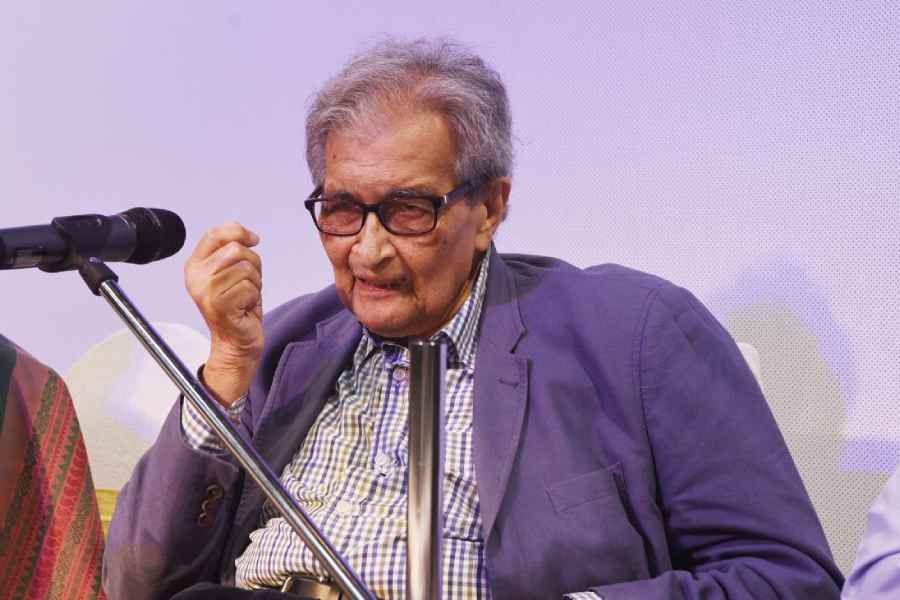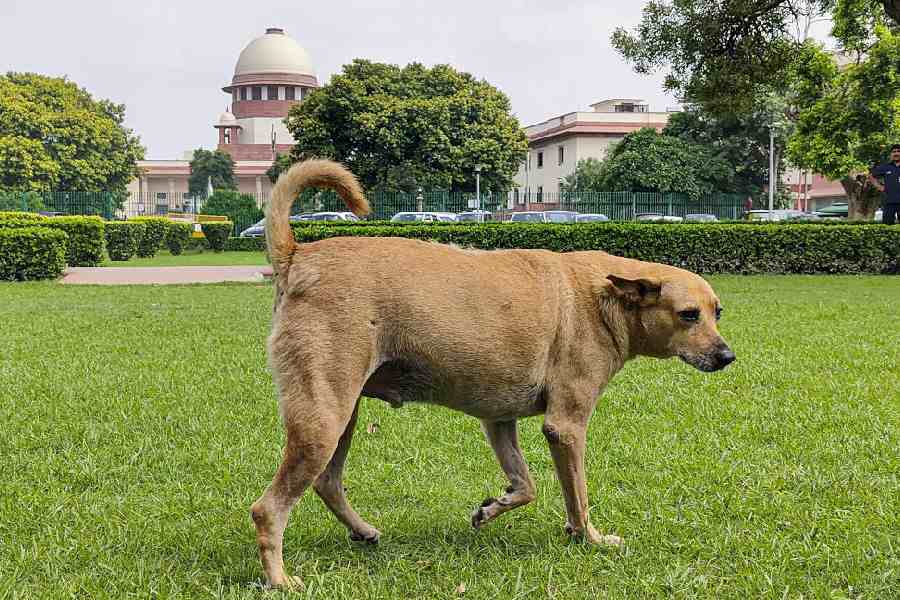
Raiganj, Oct. 15: For years, Durga puja organisers have been trying to outdo each other as far as themes, lighting and décor are concerned during the festive season, but the oldest puja here has chosen to cling to the tradition.
A concrete mandap or covered stage to hold the puja in has been built over the years. But the organisers claim parts of the wooden framework around which the Durga idol is modelled dates back to the original. The idol, too, is modelled in the same manner.
The Durga puja held in the Bandar area of town, locals say, is close to half a millennium old. Bandar translates to "port" in Bengali. The area skirts the Kulik river and local historians say it was the port of call for many merchants conducting their trade on river barges criss-crossing the country.
What started as a puja organised by the people running the market and rest houses that had come up around the port is now an event that is participated by people from across the town and its hinterland.
Brindaban Ghosh is known to be intensely involved in delving deep into the history of this town.
He narrates the history of the puja with ease.
"About 500 years ago, the Kulik river was highly navigable and merchant boats and barges used to sail down it from the river network that stretched from what is now Bangladesh to the western part of the country. During my research, that I put into a book on the history of this region, I found that the main items that were loaded into the boats from here were paddy and jute, with the latter forming a bulk of the exports. Other merchants used to come with spices and clothes to sell here," he said.
According to the historian, many of the merchants started having their own establishments in the river port area. "It is from their religious needs that the puja began. More and more people became involved in the festivities and puja but the tradition still remains," Ghosh said.
Rupesh Saha, the secretary of this year's Adi Bandar Durga Puja Committee, said he was not sure when the puja had actually begun. "I have been told by my grandfather that his grandparents, too, had talked about the puja. There are some rituals and practices that we believe have remained unchanged over the years. A major portion of the framework around which the idols are made is the same as the original one. After every immersion, we bring back the frame and keep it in the mandap. In keeping with the tradition, our idols are made in "ek chala" (in one frame). The old frame work had been reinforced by new pieces of wood."
In the continuing tradition, the same family of pundits performs the puja and the idols are crafted by the same family of clay modellers.
"We use only earthenware for keeping the offerings before the goddess. Like in the past, the idol is taken on a litter to the ghat for immersion, instead of a vehicle. We prefer to stick to the age-old system. Our committee members and volunteers collect the subscriptions. There is no fixed amount and we accept whatever an individual donates. Our main expense is the khichri bhog, puris and payesh that hundreds enjoy on three days of Saptami, Ashtami and Nabami," said Saha.
Another unique feature of the Adi Bandar Puja is that it is not limited to a particular neighbourhood but involves people from across the town.
"This is a puja of the entire town. Each year, there is a new committee and its meeting is announced over loudspeaker all over town. It is open to all. On the day of the meeting, a committee is formed to organise the puja," he said
Dulal Das, a resident of the Dakshin Birnagar area, located away from Bandar, is one of the members of this year's organising committee. "There is a puja in the neighbourhood where I live. But this is the puja of the entire town. I have always been involved in the Puja. I have been inducted into the committee for the first time this year," he said.













